PERFORM TUG TEST IN LESS THAN 5 MINUTES
Ready, steady, go! It only takes a few second to perform a TUG test with QTUGâ„¢. Data are analyzed in real-time and results provided immedidately.
SOPHISTICATED ON THE INSIDE
QTUGâ„¢ is very simple to use and uses sophisticated evidence-based analytics. The patented wearable sensor algorithm behind the QTUGâ„¢ technology provides immediate results, based on nine years of peer reviewed research. The technology has been extensively clinically validated through publication in top-tier international scientific journals.
Kinesis QTUG is an objective tool for identifying older adults at risk of falling. QTUGâ„¢ (Quantitative Timed Up and Go) is based on the Timed Up and Go test and is instrumented with wireless sensors placed on each leg. This technology provides a method for objective assessment of mobility, frailty and falls risk. It provides automatic analysis of patient data against average values for patients’ age and gender with colour coding to indicate deviations from normality.
Â
QTUGâ„¢ is intended to assist those assessing falls risk, by providing a falls risk score (known as the Falls Risk Estimate (FRE)) and a frailty score (known as the Frailty Estimate) along with fast, accurate and objective data. QTUGâ„¢ also incorporates a questionnaire based on the American Geriatric Society (AGS) and British Geriatric Society (BGS) guidelines recording standard falls risk-factors.[/vc_column_text][vc_video link=”https://www.youtube.com/watch?v=c4IJqvbiNG0″ title=”Kinesis QTUG – Quantitative Timed Up and Go – instructional video”][/vc_tta_section][vc_tta_section title=”Evidence” tab_id=”1508074060015-328027e4-441e”][vc_column_text]
Our research is your technology!
Our products, QTUGâ„¢ (Quantitative Timed Up and Go) and Kinesis Gaitâ„¢, falls risk and gait assessment technologies have been developed through nine years of research and extensively clinically validated through publication in top-tier international scientific journals.
Supporting Clinical and Scientific Evidence
- Key evidence and findings
- NICE briefing on QTUGâ„¢ technology
- Case Studies on Kinesis technologies
- Supporting evidence – Peer reviewed journal papers
- Supporting evidence – Peer reviewed conference papers
- QTUG cost saving and fall prevention economic model
Kinesis products have been shown to be Valid, Reliable and Accurate in measuring Gait and Mobility, while as well as assessing Falls in older adults.
The technology is based on nine years of peer reviewed research. Our technology uses advanced wearable sensors suitable for objective assessment of gait and mobility, measurement of response to rehabilitation and treatment and well as screening for falls risk, mobility impairment and frailty.
Kinesis Health Technologies Ltd are a spin-out from University College Dublin and the TRIL centre, a large ageing research project funded by Intel, GE Healthcare and the Irish government.
Key findings of research to date
- QTUGâ„¢ has been shown to be more accurate than standard measures (manually timed TUG test and Berg balance scale) in assessing risk of falling in older adults.
- QTUGâ„¢ has been shown to provide a robust and reliable estimate of patients’ frailty state.
- Inertial sensor algorithms contained in Kinesis Gaitâ„¢ and QTUGâ„¢ have been validated against gold standards for assessment of temporal and spatial gait parameters (optical motion capture system, forceplate and GAITRite).
- QTUGâ„¢ has been validated both prospectively and cross-sectionally, and shown to provide an accurate measure of falls risk in older adults.
- Mobility parameters derived using Kinesis Gaitâ„¢ and QTUGâ„¢ have been shown to provide valid and reliable measurement of gait and mobility in: patients with multiple sclerosis, older adults and healthy controls.
- Change in mobility parameters obtained using QTUGâ„¢ have been shown to be associated with cognitive decline in older adults.
NICE briefing
NICE, The UK National Institute of Health and Care Excellence have recently issued a briefing note on the QTUGâ„¢ technology and its utility in assessing falls risk and frailty. Click here to read the briefing note.
Case studies
- QTUGâ„¢ used to assess a nursing home based fall prevention exercise programme – Herfordshire Care Providers Association (HCPA), Hertfordshire, UK.
- Use of QTUGâ„¢ in a hospital outpatient setting – St Vincents hospital, Dublin, Ireland.
- Use of QTUGâ„¢ in a community fall prevention service – Irishtown Primary Care Centre, Dublin, Ireland.
- Use of QTUGâ„¢ for risk stratification in a sheltered housing organisation – Circle housing, Kent, UK.
Internationally peer reviewed journal papers
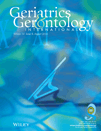
The effect of a dual task on Quantitative Timed Up and Go (QTUG) performance in community-dwelling older adults – a preliminary study
Erin Smith, Lorcan Walsh, Julie Doyle, Barry Greene, Catherine Blake
Geriatrics & Gerontology International 2016. In press. DOI: 10.1111/ggi.12845
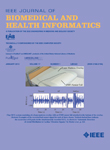
Fall risk assessment through automatic combination of clinical fall risk factors and body-worn sensor data
Barry R. Greene, Stephen J. Redmond, Brian Caulfield
IEEE J. Biomed Health Inform 2016. 21(3). DOI: 10.1109/JBHI.2016.2539098

Assessment and classification of early stage multiple sclerosis with inertial sensors: comparison against clinical measures of disease state
Barry R. Greene, Stephanie Rutledge, Iain McGurgan, Christopher McGuigan, Karen O’Connell, Brian Caulfield, Niall Tubridy
IEEE J. Biomed Health Inform 2015. Jul;19(4):1356-61.
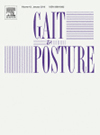
The reliability of the quantitative timed up and go test (QTUG) measured over five consecutive days under single and dual-task conditions in community dwelling older adults
Erin Smith,Lorcan Walsh, Julie Doyle, Barry Greene, Catherine Blake
Gait & Posture 2016, (43): 239-244
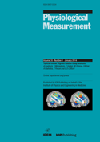
Classification of frailty and falls history using a combination of sensor-based mobility assessments
Barry R. Greene, Emer P Doheny, Rose A. Kenny and Brian Caulfield
Physiological Measurement, 2014, 35 (10), 2053
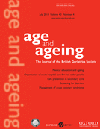
Frailty status can be accurately assessed using inertial sensors and the TUG test
Barry R. Greene, Emer P Doheny, Aisling O’Halloran, Rose A. Kenny
Age and Ageing, 2014, 43(3): 406-411
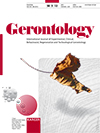
Evaluation of falls risk in community-dwelling older adults using body-worn sensors
B. R. Greene, E. P. Doheny, C. W. Walsh, C. Cunningham, L. Crosby, and R. A. Kenny
Gerontol. 58(5), 2012
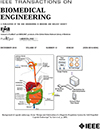
Quantitative falls risk assessment using the timed up and go test
Barry R. Greene, Alan O’Donovan, Roman Romero-Ortuno, Lisa Cogan, Cliodhna Ni Scanaill, Rose A. Kenny
IEEE Trans. Biomed. Eng. 2010. 57(12): p. 2918-26
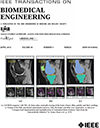
Assessment of cognitive decline through quantitative analysis of the timed up and go test
B. R. Greene, R. A. Kenny
IEEE Trans. Biomed. Eng. 59(4) p988-995, 2012
Stability of daily home-based measures of postural control over an 8-week period in highly functioning older adults
Denise McGrath, B. R. Greene, K.J. Sheehan, L. Walsh, R. A. Kenny, B. Caulfield
Eur. J. Appl. Physiol. 2015 Feb;115(2):437-49
Falls classification using tri-axial accelerometers during the five-times-sit-to-stand test
Emer P. Doheny, Barry R. Greene, Cathal Walsh, Timothy Foran, Clodagh Cunningham, Chie Wei Fan and Rose Anne Kenny
Gait and Posture, 2013, I38(4): 1021-1025
A comparison of algorithms for body-worn sensor based spatio-temporal gait parameters to GAITRite electronic walkway
Greene BR, Foran T, McGrath D, E.P. Doheny, Burns A. Caulfield, B.
Journal of Applied Biomechanics; 28(3):349-55, 2012
Early identification of declining balance in higher functioning older adults, an inertial sensor based method
KJ Sheehan, BR Greene, C Cunningham, L Crosby, RA Kenny
Gait & Posture, 2014, 39(4): 1034-1039
Effects of a low-volume, vigorous intensity step exercise programme on functional mobility in middle-aged adults
Emer P. Doheny, Denise McGrath, Massimiliano Ditroilo; Jacqueline Mair, Barry R. Greene, Brian Caulfield, Giuseppe De Vito, Madeleine Lowery
Annals of Biomedical Engineering, 2013, 41(8): 1748-1757
Quantitative falls risk estimation through multi-sensor assessment of standing balance
Barry R. Greene, Denise McGrath, Lorcan Walsh, Emer P. Doheny, David McKeown, Chiara Garattini, Clodagh Cunningham, Lisa Crosby, Brian Caulfield, Rose A. Kenny
Phys Meas. 33 (2012) 2049–2063
An adaptive gyroscope based algorithm for temporal gait analysis
B. R. Greene, D. McGrath, R. O’Neill, K. J. O’Donovan, A. Burns, and B. Caulfield
Medical & Biological Engineering & Computing, vol. 48, Issue 12 (2010), p. 1251
Estimation of minimum ground-clearance (MGC) using body-worn inertial sensors
Denise McGrath, Barry R. Greene, Cathal Walsh, Brian Caulfield
J. Biomech. 44, 1083-1088 (2011)
Diurnal variations in the outcomes of instrumented gait and quiet standing balance assessments and their association with falls history
Emer P. Doheny, Barry R. Greene, Timothy Foran, Clodagh Cunningham, Chie Wei Fan and Rose Anne Kenny
Phys Meas, 33(3), p361, 2012
Gyroscope based assessment of temporal gait parameters during treadmill running
Denise McGrath, Barry R. Greene, Brian Caulfield
Journal of Sports Biomechanics July 2012, p1-7
Technology Innovation Enabling Falls Risk Assessment in a Community Setting
Ni Scanaill, C., Garattini, C., Greene, B. R., & McGrath, M. J.
Ageing International, vol 35, No. 4. 2010
SHIMMERâ„¢ – A Wireless Sensor Platform for Non-invasive Biomedical Research
Adrian Burns, Barry R. Greene, Michael J. McGrath, Terrance J. O’Shea, Benjamin Kuris, Steven M. Ayer, Florin Stroiescu, Victor Cionca
IEEE Sensors, Volume: 10, Issue: 9 (2010), 1527-1534
Internationally peer reviewed conference papers
- Marie Mc Carthy, Bill Byrom, Brenda Reginatto, Susie Donnelly, Barry R Greene, J Patrick Bewley, Willie Muehlhausen, Oisin Kearns. “The Reaches Study: Design of an Innovative Patient Centric Trial in a Novel Setting”, International Conference on Frailty and Sarcopenia Research, 2017.
- Ruth M. Maher, Devon G. Cota, Sonal Sheth. “Determining contributing factors to outcome measure scores using triaxial wearable sensor technology in an individual using a straight cane and ankle-foot orthosis”, APTA CSM 2017 Orthopaedic Section, (Abstracts OPO1–OPO24) 2017.
- Grace Coakley, Dara Meldrum. “Quantitative Timed Up and Go to measure falls risk and frailty levels in elderly patients post hip fracture”. 64th Annual and Scientific Meeting of the Irish Gerontological Society, Kilarney Oct 2016, Age and Ageing, Volume 45 Issue suppl 2, 2016.
- Barry R. Greene, Denise McGrath, Brian Caulfield. “A comparison of cross-sectional and prospective algorithms for falls risk assessment”. IEEE Engineering in Medicine and Biology Conference, Chicago, 2014.
- Barry R. Greene, Michael Healy, Stephanie Rutledge,Brian Caulfield, Niall Tubridy, “Quantitative assessment of multiple sclerosis using inertial sensors and the TUG test”. IEEE Engineering in Medicine and Biology Conference, Chicago, 2014
- Emer Doheny, Denise McGrath, Barry R. Greene, Lorcan Walsh, David J. McKeown, Clodagh Cunningham, Lisa Crosby, Rose Anne Kenny, Brian Caulfield, “Displacement of centre of mass during quiet standing assessed using accelerometry in older fallers and non-fallersâ€, IEEE EMBC 2012 conference
- Denise McGrath, Emer Doheny, Lorcan Walsh, David J. McKeown, Clodagh Cunningham, Lisa Crosby, Rose Anne Kenny, Nicholas Stergiou, Brian Caulfield, Barry R. Greene, “Taking balance measurement out of the laboratory and into the home: discriminatory capability of novel centre of pressure measurement in fallers and non-fallerâ€, IEEE EMBC 2012 conference
- Barry R. Greene, Denise McGrath, Timothy G. Foran, Emer P. Doheny, Brian Caulfield, ‘Body-worn sensor based surrogates of minimum ground clearance in elderly fallers and controls’, EMBC 2011
- Lorcan Walsh, Barry R. Greene, Denise McGrath, Adrian Burns, Brian Caulfield, ‘Development and Validation of a Clinic Based Balance Assessment Technology’, EMBC 2011.
- Cliodhna Ni Scanaill, Barry R. Greene, Emer Doheny, Karol O’Donovan, Terrance Dishongh, Alan D. O’Donovan, Tim Foran, Clodagh Cunningham, Rose Anne Kenny, ‘Clinical Gait Assessment of Older Adults using Open Platform Tools’, EMBC 2011
- Emer P. Doheny, Chie Wei Fan, Timothy Foran, Barry R. Greene, Clodagh Cunningham and Rose Anne Kenny, ‘An instrumented five times sit to stand test used to examine differences between fallers and non-fallers’, EMBC 2011.
- Denise McGrath, Barry R. Greene, Emer P. Doheny, and Brian Caulfield, ‘Reliability of Quantitative TUG measures of mobility for use in falls risk assessment’, EMBC 2011
- Lorcan Walsh, Barry R. Greene, Adrian Burns, Cliodhna Nà Scanaill, “The Unobtrusive Assessment of Daily Activity and Gait Velocity”, Pervasive Health 2011 AAL Workshop
- Emer P. Doheny, Barry R. Greene, Chie Wei Fan, Rose Anne Kenny, ‘Changes in the stride length and stride velocity of fallers and non-fallers during dual task walking‘, EUGMS 2010
- Chiara Garattini, Barry R. Greene, Stefan Müller, Emma Fortune, Cliodhna Ni Scanaill, ‘Investigating Usage for a Quantitative Automated Version of the Timed Up and Go test (TUG)’, EUGMS 2010
- Barry R. Greene, Alan O’Donovan, Roman Romero-Ortuno, Lisa Cogan, Cliodhna Ni Scanaill, Rose A. Kenny , “Quantitative Falls risk assessment using body-worn sensors†EUGMS
- T Foran, CU Cunningham, CW Fan, B .R. Greene, C. Ni Scanaill, R. A. Kenny, ‘Orthostatic hypotension and postural sway: a possible cause for falls in the morning’, EUGMS 2010
- Emer Doheny, Barry R. Greene, Timothy Foran, Clodagh Cunningham, Chie Wei Fan, Rose Anne Kenny, ‘Diurnal variations in the five times sit-to-stand test for fallers and non-fallers’. EUGMS 2010
- Barry R. Greene, Chie. W. Fan, Alan O’Donovan, Timothy G. Foran, Clodagh Cunningham, Rose A. Kenny, ‘Wireless sensor measurement of diurnal variation in postural sway in older adults: home-based study’. EUGMS 2010
- Barry R. Greene, Denise McGrath, Ross O’ Neill, Karol O’Donovan, Adrian Burns, Brian Caulfield, ‘Adaptive estimation of temporal gait parameters using body-worn gyroscopes’. EMBC 2010
- Emer Doheny, Tim Foran, Barry R. Greene, ‘A single gyroscope method for spatial gait analysis’. EMBC 2010
- Adrian Burns, Emer Doheny, Barry R. Greene, Tim Foran, Dan Leahy, Karol O’Donovan, Michael J. McGrath (SHIMMERâ„¢: ‘An Extensible Platform for Physiological Signal Capture’. EMBC 2010.
- Barry R. Greene, Alan O’Donovan, Roman Romero-Ortuno, Lisa Cogan, Cliodhna Ni Scanaill, Rose A. Kenny. ‘Falls risk assessment through quantitative analysis of TUG’ presented at the 1st AMA-IEEE Medical Technology conference on Individualised Healthcare, Washington D.C., 21-23 Mar 2010
- Denise McGrath, Barry R. Greene, Karol O’Donovan, Brian Caulfield, ‘The use of shimmer to detect stride time in running gait. ISEA conference.
- Denise McGrath, Barry R. Greene, Karol O’Donovan, Brian Caulfield, SHIMMER: A new tool for long-term, extra-laboratory gait monitoring. ESMAC, London, 2009
- Zoran Škrba, Brian O’Mullane, Barry R. Greene, Member, Cliodhna Ni Scanaill, Chie Wei Fan, Aaron Quigley, Paddy Nixon, ‘Objective real-time assessment of walking and turning in elderly adults’, Proceedings of the 31st International Conferences of the IEEE-EMBS Conference, Minneapolis, 2009.
- Karol J. O’Donovan, Barry R. Greene, Denise McGrath, Ross O’Neill, Adrian Burns, Brian Caulfield, ‘SHIMMER: A new tool for temporal Gait analysis’, Proceedings of the 31st International Conferences of the IEEE-EMBS Conference, Minneapolis, 2009.
-
What are QTUGâ„¢ usage and best practices?
Keep in mind the following usage while performing the test.
- 3 metre distance must be accurately measured to ensure correct operation of the device.
- The recommended instructions to give the patient prior to performing the test should be as follows: ‘Complete the TUG test as fast as safely possible’.
- We do not recommend using mobility aids during the test. This can cause estimates of falls risk and frailty to be underestimated
- Height and weight should be measured before each test.
- Underfoot conditions should be controlled (e.g. no loose carpeting).
- Sensible footwear (e.g. no high-heels) should be worn during the test.
- Make sure date and time on the tablet are set correctly – to ensure patient age is calculated correctly.
-
How can I switch off the sensor?
- Place both sensors in the sensor dock. Press and hold down the RESET button for 10 seconds until the two power LEDs at the front turn off.
- Keep the RESET button pressed while removing both sensors from the sensor dock.
-
Why does the sensor not connect to the tablet?
To determine why the sensor does not connect to the tablet, you should do the following:
- Switch on the sensor (using the sensor dock or a paper clip) as it might be turned off.
- Check if the sensor battery is fully charged as it may be flat. A fully discharged sensor can take up to 6 hours to recharge directly from an electrical wall socket. The sensor battery should last approximately 5 hours under normal operating conditions.
-
Why do QTUGâ„¢ tests keeps failing?
To identify why the test keeps failing, you should do the following:
- Ensure that both sensors are fully charged then reset both sensors by placing in the charging dock and pressing RESET.
- Ensure that the LEFT and RIGHT sensors are firmly and securely fastened to the patient’s shin. Loosely fitted sensors may result in an invalid test or adversely affect algorithm operation.
- Ensure that both sensors are oriented correctly with the socket facing down and the logo facing out, the RIGHT sensor on the right leg and the LEFT sensor on the left leg. Failure to use the correct orientation will result in an incorrect calculation of mobility parameters and falls risk.
-
What should I do if the sensors are dropping connection or repeatedly asking to be charged?
If you are getting strange behaviour from QTUGâ„¢, you should do the following steps:
- Put both sensors into the sensor dock. Ensure the sensors are fully inserted into the charging dock and inserted in the right way.
- Press the RESET button on the sensor dock.
- Turn the tablet off and then turn it back on.
-
Why does the tablet not turn on?
Check if the tablet battery is fully charged by plugging into a wall socket.
-
What should I do if the sensor signals are not appearing on the tablet?
If you are getting strange behaviour from QTUGâ„¢, you should do the following steps:
- Put both sensors into the sensor dock. Ensure the sensors are fully inserted into the charging dock and inserted in the right way.
- Press the RESET button on the sensor dock.
- Turn the tablet off and then turn it back on.
- If behaviour persists, fully charge sensors (6 hours charging time).
-
What should I do if I keep receiving the message ‘Cannot find Left sensor’ or ‘Cannot find Right sensor’?
The messages, ‘Cannot find Left sensor’ and ‘Cannot find Right sensor’ usually arise when one of the sensors (LEFT sensor or RIGHT sensor) is switched off, or the battery of a given sensor is flat.
-
What should I do if I receive the message ‘Too many or not enough sensors connected’
The message, ‘Too many or not enough sensors connected’ usually arises when one or both of the sensors (LEFT sensor or RIGHT sensor) are not paired to the tablet.
- Check QTUGâ„¢ sensor ID for the available sensors (4 digit number on back of sensor casing).
- Go the Bluetooth menu in settings (hold Bluetooth symbol on drag down menu)).
- Select QTUGâ„¢ sensor from list of available Bluetooth devices.
- Left sensor identified as KI-SENSOR-L-xxxx. Similarly right sensor identified as KI-SENSOR-R-xxxx.
- Enter pairing code: 1,2,3,4.
- Sensor should now be paired. Repeat steps above to pair an additional QTUGâ„¢ sensor.
-
How do I pair a sensor to the tablet?
If sensors from multiple QTUGâ„¢ kits have been swapped and need to be paired again, follow the instructions below (also on page 16 of QTUGâ„¢ user guide)
- Go the Bluetooth menu in settings (hold Bluetooth symbol on drag down menu)).
- Select QTUGâ„¢ sensor from list of available Bluetooth devices.
- Left sensor identified as KI-SENSOR-L-xxxx. Similarly right sensor identified as KI-SENSOR-R-xxxx.
- Enter pairing code: 1,2,3,4.
- Sensor should now be paired. Repeat steps above to pair an additional QTUGâ„¢ sensor.
-
How do I automatically back-up QTUG data?
QTUG sensor data are anonymised and can be back-up automatically via Wi-Fi. More information can found in the QTUGâ„¢ user guide
- Ensure you have ticked ‘Enable Remote back-up’ under Settings menu.
- Provide your tablet Wi-Fi MAC address to us (Go to ‘About Device’ under Settings and press ‘Status’, record MAC address and send via Support (below).
- Once we have received your MAC address we can register your system, and back-up will be automatic.
-
Can I use QTUGâ„¢ tablet and sensors for the Kinesis Gait product?
Yes. Both Kinesis Gaitâ„¢ and QTUGâ„¢ products can use the same sensors and tablet device.
-
How long does a QTUGâ„¢ assessment take?
Assessment of mobility and falls risk and frailty using QTUGâ„¢ should take no longer than 10 minutes.
-
Can a patient perform the test with a mobility aid/assistance?
Yes they can. However, we recommend that patients don’t use a mobility aid when doing the test as QTUG™ is more accurate when used without a mobility aid. QTUG™ will still work with a mobility aid but may underestimate falls risk and mobility impairment.
-
What does the QTUGâ„¢ Falls Risk Estimate (FRE) mean?
The Falls risk estimate produced by QTUGâ„¢ is a statistical estimate of the patients’ current risk of having a fall and is based on a model of community dwelling older adults.
-
What does the QTUGâ„¢ Frailty Estimate mean?
The Frailty estimate produced by QTUGâ„¢ is a statistical estimate of the patients’ current level of Frailty based on Fried’s frailty phenotype derived from a statistical model of community dwelling older adults.
-
What does the QTUGâ„¢ comparison to reference data mean?
The QTUGâ„¢ comparison to reference data is a statistical comparison the patients’ mobility against average values for their age-group and gender based on a large reference population containing a variety of patients.
-
What other conditions can QTUGâ„¢ screening be applied to?
QTUG™ can be used to assess gait and mobility in patients suffering from Multiple Sclerosis, Parkinson’s and other patients with gait disorders.
-
Can QTUGâ„¢ be used in the home?
QTUGâ„¢ can be used to assess patients in the home under supervised conditions. Take care to ensure the 3m walking distance is accurately measured and that the underfoot conditions are suitable for the test (e.g. free of clutter, no loose carpeting, at least 3.5 metres of uninterupted linear space).
-
How do I know what software version I am using?
To identify the QTUGâ„¢ or Kinesis Gait version on your device, you should do the following:
- Turn on the tablet and tap the QTUGâ„¢ icon to launch the QTUGâ„¢ application.
- Tap the QTUGâ„¢ logo near the top-left corner on the action bar of the application.
- The software version will be displayed at the bottom.
KINESIS QTUGâ„¢ KEY FEATURES
Falls Prevention, Gait and Mobility assessment
Proven technology – Improving quality of care for older adults
[/vc_column_text][/vc_column][/vc_row][vc_row full_width=”0″ full_height=”0″ row_padding=”no_padding” particles=”0″ css=”.vc_custom_1500441065097{padding-top: 25px !important;}”][vc_column width=”1/2″][vc_column_text]
 Accurate assessment of falls risk
Accurate assessment of falls risk
Prevent falls through more accurate assessment and referral!
Quantitative Timed Up and Go (QTUGâ„¢) provides Falls risk score (a validated risk profile of a patients’ future risk of having a fall). QTUGâ„¢ also provides an estimate of Frailty. The Falls risk and Frailty scores have been extensively validated by nine years of research.[/vc_column_text][/vc_column][vc_column width=”1/2″][vc_column_text]
 Comparison to reference population
Comparison to reference population
QTUGâ„¢ can identify specific gait and mobility problems by automatic comparison of patient’s mobility (e.g. standing, walking turning) against average values for age and gender. The results are colour coded to highlight gait and mobility impairment.[/vc_column_text][/vc_column][/vc_row][vc_row full_width=”0″ full_height=”0″ row_padding=”no_padding” particles=”0″ css=”.vc_custom_1500441087415{padding-top: 25px !important;}”][vc_column width=”1/2″][vc_column_text]
 Trend TUG time, falls risk and frailty over time
Trend TUG time, falls risk and frailty over time
QTUGâ„¢ can be used to determine how a patient responds to intervention ,
therapy or medication by analyzing falls risk assessment and frailty scores as well as gait and mobility data across multiple assessments. Trend Falls risk, Frailty and TUG test data over time as well as view all historical tests.[/vc_column_text][/vc_column][vc_column width=”1/2″][vc_column_text]
 Gait & Mobility assessment
Gait & Mobility assessment
Quantitative assessment of each phase of the TUG (Timed Up and Go) test including, standing, sitting, walking and turning. Customise results by pinning most relevant data to the summary results screen. Data are colour-coded to highlight any statistical deviations in mobility from reference values.[/vc_column_text][/vc_column][/vc_row][vc_row full_width=”0″ full_height=”0″ particles=”0″ css=”.vc_custom_1457518050592{padding-top: 96px !important;}”][vc_column][vc_cta h2=”READY TO IMPROVE ASSESSMENT?” h4=”Start using QTUGâ„¢ today to help prevent falls!” txt_align=”center” style=”outline” color=”black” add_button=”right” btn_title=”Request quote now” btn_color=”primary” btn_size=”lg” btn_align=”center” btn_i_icon_fontawesome=”fa fa-hand-pointer-o” btn_button_block=”true” btn_add_icon=”true” btn_link=”url:https%3A%2F%2Fwww.rehacare.com.au%2Fcontact-us%2F|||”]Fast and efficient. Assess a patients falls risk and mobility in less than 5 minutes[/vc_cta][/vc_column][/vc_row]

